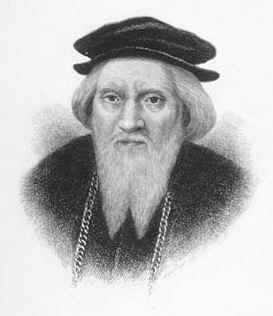1492 was a remarkable year in the
history of the world. And that was because three little ships made a
remarkable and daring journey to a land never seen before by much of
the world. The Nina, Pinta, and Santa Maria thankfully landed on an
island in the Caribbean on October 12 after a harrowing (scary and
slightly dangerous) trip across the great unknown, the Atlantic
Ocean. Their fearless leader, Christopher Columbus had done what he
said he was going to do...find the Indies by sailing west instead of
east.
But what did they really find? A whole
new world, a big mass of land that was smack dab in the way of China
and the riches of the indies: spices and more spices. Can you
imagine how bad that European food must have tasted if they were
willing to risk everything to find a quicker way to the Indies and
cinnamon, pepper, nutmeg, cloves.
Well, they didn't just go because of
spices, but it was a BIG part of it. They wanted to find gold, and
they wanted to save the world from hell by bringing Christianity to
people, whether they wanted it or not.
King Ferdinand V and Queen Isabella of
Spain provided Columbus with the boats and supplies and so they
quickly benefited from the riches they found in this new world.
Spain was becoming very rich and powerful. Portugal also sent out
explorers like Vasco de Gama, Cabral, and Magellan. Portugal and
Spain were raking in the riches.
So, what about England? After all, they
were an island nation and should be cashing in on all of this new
discovery.
In 1496, King Henry VII issued letters
to allow John Cabot to sail in eastern, western, and northern seas
that had not been explored by the Spanish and Portuguese. Cabot was
not even English. He was born in 1451 as Giovanni Caboto. He was
from Italy, just like Christopher Columbus. At first he went to
Spain and Portugal to get them to give him ships to explore this new
world. He thought that Asia could be reached easily and quickly by
sailing more to the north.

But Spain and Portugal didn't want to
help him because they felt they already had enough explorers out
there. They didn't need anymore.
Guess who had to pay the most for
spices? England. They were the farthest away from the traditional
spice route to India. They wanted to get the spices themselves and
of course, riches.
On his second try, Cabot set sail in
May, 1497. He had one small ship, the Matthew,
with a crew of about 18 men. He sailed the same route the Vikings
had used hundreds of years before.
Eventually, he did
find land, but no spices. He came back over a year later in August
1497 with glowing reports of what he had found. He provided the
first mapped details of the North American coast.
King Henry called
Cabot's discovery “new-found-land”. It would eventually become
known as Newfoundland, part of present-day Canada. Cabot became
famous. Everyone thought he had found Asia.
He sailed again in
May 1498 with five ships. The weather was bad and one ship sailed
back while four continued on. They were never heard from again.
Though Cabot didn't
know it, he had discovered North America for the Europeans. His
discovery would become more valuable than a ship's hull filled with
treasure. It allowed England to claim North America.
Great and helpful!
ReplyDelete